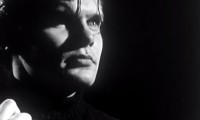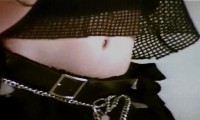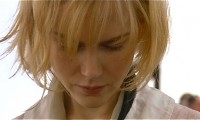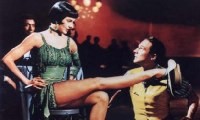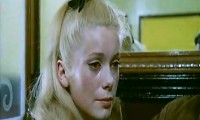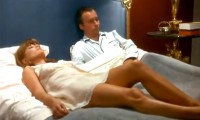This above all: to thine own self be true
And it doth follow, as the night the day,
Thou canst not then be false to any man.
— “Hamlet” (Act I, Scene iii)
When I scored a woeful 8/20 on the online Spot The Fake Smile test, I got worried. A friend of mine scored 17/20 and I couldn’t help wondering what details I failed to observe. Am I unable to discern a fake smile from a genuine one? Is there some aspect of the smile that reveals instantly whether it is sincere or a manufactured event?
In this scene from “Nashville,” director Robert Altman has conveyed a sense of undeniable sincerity. Or is it authenticity?
Robert Altman, “Nashville” (1975)
The expressions on the faces in the audience seem to show their thoughts. Their defenses are down and it’s something like: we see who you really are at this moment. And although the character Tom Frank, played by Keith Carradine, proves at the end of the narrative to be a rather self-absorbed prick (in fact the opposite of the vulnerable protagonist of his song), it’s certainly not to be seen here.
A few years ago, a friend lent me Lionel Trilling’s book of literary criticism, “Sincerity and Authenticity” — a compilation of Trilling’s lectures delivered at Harvard University in 1970 while he was Charles Eliot Norton Professor of Poetry. It’s a heuristic, analytic text that attempts to establish a meaningful distinction between the two terms as they figure in hundreds of years of literary works and cultural history. The book is notoriously difficult to understand. I managed to finish it, though I don’t think I followed all of Trilling’s arguments.
Regardless, I’ve been thinking about the difference between these ideas ever since. On the second page of the book, he proposes that “at a certain point in its history the moral life of Europe added to itself a new element, the state or quality of the self which we call sincerity.” It refers, he adds, to “a congruence between avowal and actual feeling.” Thus, Polonius’ surprising speech in “Hamlet” (see above) shows him to have “conceived of sincerity as an essential condition of virtue” and he has “discovered how it is to be attained.”
I find myself categorizing people based on the question of whether they are true to themselves or not, and what repercussions — if any — such truth could have. Trilling further posits that sincerity (a word whose etymology can be traced back to sine cera — without wax; in French, sans cire) is a form of honesty in keeping with social mores while authenticity, on the other hand, is about being true to oneself. He also describes authenticity as the possibility of being true to oneself while simultaneously not betraying others. Authenticity came along “to suggest the deficiencies of sincerity and to usurp its place in our esteem.”
Ponderous!
Ang Lee, “The Ice Storm” (1997)
In “The Ice Storm” the two main characters — Ben and Elena Hood — are suburban parents in middle age who are bored with their lives. They seem authentic enough. But when Ben (Kevin Kline) is in bed with his neighbour’s wife, Janey Carver, and starts to chatter meaninglessly immediately following an afternoon sexual encounter, it seems he never really lets go of the charade of his life. The affair is perhaps merely sincere, as it repurposes escapist lovemaking and renders it commensurate with all his other activities, such as golf, and the endless narcissistic hang-ups and petty jealousies of his upwardly mobile life. Janey (Sigourney Weaver), on the other hand, seems authentic when she basically tells him to shut up. She knows she wants something more authentic than her current life, and she doesn’t want to revisit features of her marriage within the bounds of an illicit affair. Is there no escape from the chatty fakery of it all?
In “American Beauty,” a film that treats similar themes, Lester Burnham is the examplar of an all-out authentic narrator. Here he observes the sincere way in which his wife fits into the conventional lifestyle they have cultivated.
Sam Mendes, “American Beauty” (1999)
Authenticity finds purchase when he tells people to fuck off in various contexts that have proven to be very phony indeed. It seems being authentic rather than sincere changes his life for the better.
Both “American Beauty” and “The Ice Storm” are of a piece with Trilling’s characterization of early 20th century modernist literature: “No literature has ever been so shockingly personal — it asks us if we are content with our marriages, with our professional lives, with our friends…It asks us if we are content with ourselves, if we are saved or damned — more than with anything else, it is concerned with salvation.”
The paradox, he pointed out, was that modernist figures such as T. S. Eliot and James Joyce claimed that “the progress of an artist is a continual self-sacrifice, a continual extinction of personality” (Eliot), and that “the personality of the artist… finally refines itself out of existence, impersonalizes itself” (Joyce).
Sam Mendes, “American Beauty” (1999)
– Nyla Matuk
